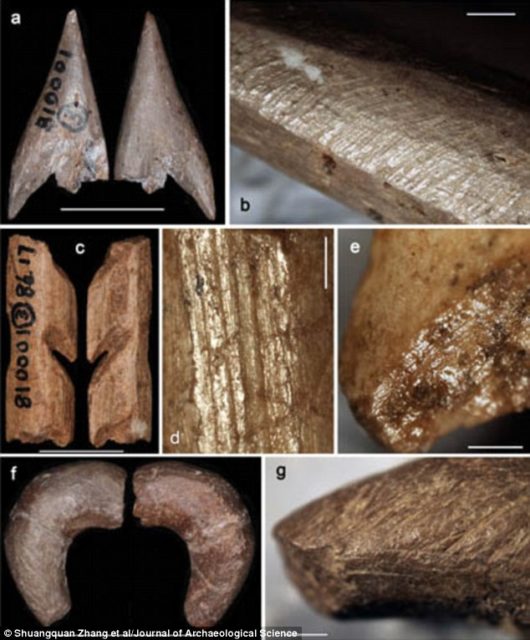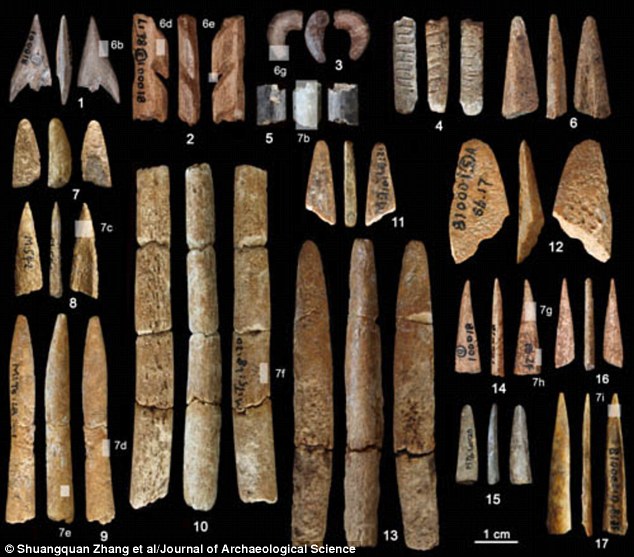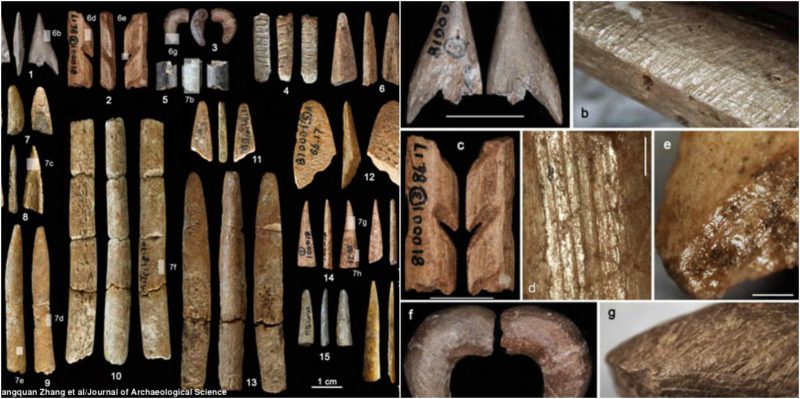Weapons have been used for centuries; without these weapons, it is quite possible our ancestors wouldn’t have survived. Weapons have been used for fending off predators, for hunting, and even for wars. For years experts have believed that the inventions of tools and weapons are what sprung the human race forward, showing that they were capable of thinking deeper than originally believed.
Throughout the years, archaeologists and the public have come across various ancient tools worldwide. Just recently, some of the oldest tools have been found in a cave in China. The tools were made of bone and are the first tools found outside of Africa.

Among the hoard found were sharp pointed rocks, awls, harpoons, and wedges which were all intricately carved out of bone that dates back nearly 35,000 years. Experts will study these tools and reveal just how technological advances helped the Stone Age people disperse across the world.
Archaeologists discovered about 17 carved and polished weapons and tools at a Paleolithic site that is known as Ma’anshan Cave near Zunyi city in Guizhou province in southern China. Archaeologists believe that the tools were carved anywhere between 35,000 to 18,000 years ago. Not only does this discovery help the archaeologists study the technique used in making the tools but it shows the kinds of foods people ate during that period.
Among the 17 tools, there were six spear points which dated back about 34,000 years and were believed to be used for hunting animals.
Interestingly, there were a few barbed points found in the group. Archaeologists believe that they were used as harpoons. These harpoons dated about 23,000 to 18,000 years ago. Not only is it interesting that their tools changed over time, but this also means that they hunted animals on land and used the harpoons to start fishing as another way of providing food.
The lead paleontologist who works for the Key Laboratory of Vertebrate Evolution and Human Origins at the Chinese Academy of Sciences, Dr. Shuangquan Zhang, said that the harpoons were the oldest weapons to have been found outside of Africa. He added that the cave had records of the oldest bone tools from China, which include the oldest known barbed point tools made outside of Africa.

Zhang explained that the changes in hunting tools could have indicated that there was a desire to change the foods the ancient people were eating. The theory is that at first they were eating smaller mammals, then they decided to switch to fish. However, it cannot be proven until there is more analysis done on the tools.
Zhang said that by finding all of these new tools they are able to study the origins of the bones and tool technology and compare them to Africa’s and Eurasia’s.
The researchers on the site said that there have only been a small amount of sites in Africa where there was evidence of bone tools being made, and those tools were dated to about 45,000 years ago.
For years, experts believed that the use of bones to make weapons and tools occurred later in human history. They believed that many ancient humans used stones as tools, having found stone tools from nearly 2.6 million years ago.
The oldest barbed bone tools that were found in Africa date back 90,000 and 60,000 years. There have been a large number of sharp points with shaped pieces of bone, ivory, and antlers that were found in Europe, dating back to 40,000 to 35,000 years ago.
Many anthropologists who study the bone carvings believe that the shift from stone to bone, whether the items were used for tools, weapons, engravings, or jewelry, shows a sign that there was a major shift in human cognition. Some experts believe that this shift gave the Homo sapiens the ability to beat out other human species like the Neanderthals and the Denisovans.
Homo sapiens are thought to have evolved in Africa about 200,000 years ago and dispersed from Africa to other parts of the world around 60,000 years ago. Surprisingly, a recent study done showed that Homo sapien teeth found in China dated back to nearly 80,000 to 120,000 years ago. This suggests that the species had left Africa earlier than what experts believed.
The researchers on the site believed that the ancient humans had used stone tools to cut and carve the bone tools. They were first scraped and then polished in order to produce a sharper point.
Zhang and his colleagues believe that the techniques used to carve the bone tools had a rather sophisticated look, supporting their theories that technology in tool making progressed rapidly. Another anthropologist, Dr. Xing Gao, said that the technological advancements in tool making suggests that there could have also been cultural changes in those groups.
